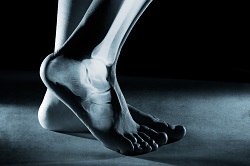EU project pioneers new wave material analysis
“The internal structure of certain materials can be highly complex,” explains MUSAL (Multi-scale modelling of waves of porous media with applications to acoustic control and biomechanics) project coordinator Professor Graham Rogerson from Keele University in the UK. “A good example is a type of material known as heterogeneous porous media, which importantly contain voids. Human bone is a good example of this material occurring naturally.” Heterogeneous porous materials have also been developed synthetically in response to specific industry demands, for example as an effective insulation material against noise. “Heterogeneous media behave differently to homogeneous solids,” continues Rogerson. “Understanding their remarkable effects has led to the design and development of new engineering devices. These include acoustic absorbers, ultrasonic transducers and transmitters in the aerospace and automotive industries.” Identification portrait The two-year EU-funded MUSAL project was launched in 2015 to assess the application of elastic wave modelling on heterogeneous media, and whether this can be expanded to accurately and efficiently predict the behaviour and properties of certain materials. One key advantage is that the wave data collected can be interpreted and assessed without the need for invasive analysis. “The modelling of wave propagation in heterogeneous media could really benefit mechanical and civil engineering for example, because it offers a non-destructive means of testing materials and structures,” says Rogerson. Wave patterns represent a kind of ‘identification portrait’, unique to every material. The larger the frequency range that can be explored, the more accurate the ‘portrait’ will be. By increasing this range, the MUSAL project has opened up the possibility of detecting minute variations in a material’s microstructure and developing new, more precise methods of acoustic diagnoses. “To date, many theoretical approaches to wave propagation in heterogeneous media have been applicable in only a few limited cases,” says Rogerson. “We have developed new theoretical models that are applicable across a wider frequency range.” Industrial applications Solutions for several challenges related to specific examples were achieved during the project. Potential end users include engineers, who can directly employ the project’s methodology to design new types of materials and devices for various applications in industry, medicine and geophysics. In biomechanics for example, live tissue – such as bone – can be modelled by porous media. The EU’s Consumers, Health, Agriculture and Food Executive Agency estimates that 22 % of the EU population experience long-term muscle, bone and joint problems, from which significant economic and social issues result. “Many people worldwide suffer from osteoporosis, a progressive bone disease that is characterised by a decrease in bone mass and density,” says Rogerson. “Since osteoporosis itself has no symptoms, the detection of the bone structure using non-invasive testing is a major challenge.” The MUSAL project has shown a correlation between wave speed and bone density. This could potentially be used for the early detection of osteoporosis, helping to slow or even stop progression of the disease through early intervention and therapy. “The results obtained and resulting methodologies established could have far-reaching implications for the detection and monitoring of a number of chronic bone and joint conditions,” says Rogerson. The study of wave propagation in porous media could also be important for geological explorations. Better understanding of how the internal texture of soils and rocks affects the characteristics of travelling elastic waves may help to develop new robust methods for detecting gas and oil reserves. Again, this underlines the far-reaching implications of the pioneering work conducted by the MUSAL project.
Keywords
MUSAL, wave, modelling, porous, material, bone, osteoporosis, soil rock, geology, industry



